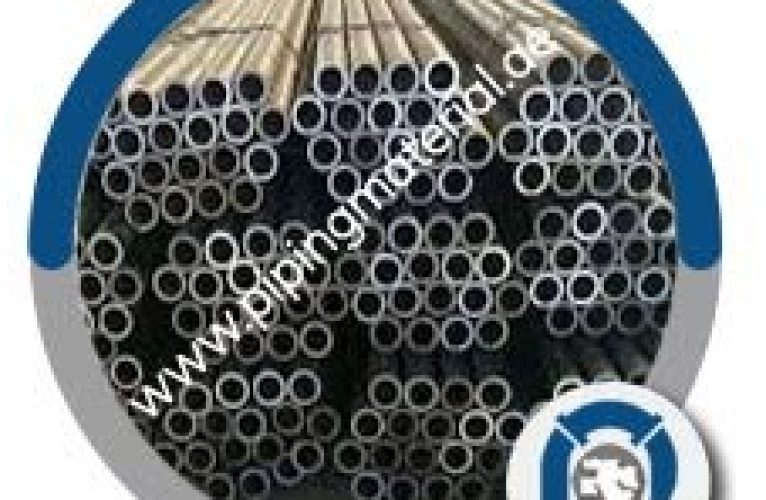
1. What type of material is the SA 213 t22 tube?
SA 213 T22 is a ferritic alloy steel tube often used in high-temperature applications. The “T22” designation means that it has a minimum tensile strength of 85,000 psi and a minimum yield strength of 60,000 psi.
It also has 2% chromium and 1% molybdenum. This mixing of chromium and molybdenum makes the steel more robust and more resistant to corrosion, so it can be used in places with high temperatures.
SA 213 T22 tube also have good creep and rupture strength, making them suitable for power plants and other places with high temperatures and pressures. SA 213 T22 can also be welded and has good formability and ductility, making it easy to make and install.
2. What is the difference between SA 213 t22 and t91 tubes?
SA 213 T22 and T91 are both types of ferritic alloy steel tubes. There are, however, some crucial differences between the two grades.
Composition: T22 comprises 2% chromium and 1% molybdenum, while chromium (9%) and molybdenum (1%) are in higher amounts in T91. It means that T91 is stronger and more resistant to corrosion than T22.
Temperature range: T22 is usually used in situations where temperatures don’t go above about 593°C (1100°F), while T91 is made to be used in situations where temperatures don’t go above about 816°C (1500°F).
Creep force: T91 has a higher creep strength than T22, which means it can handle high stress at high temperatures without changing shape for a long time.
Weldability: Because of its higher alloy content, T91 is generally considered less weldable than T22.
T91 is a higher-grade alloy steel tube that can be used in applications with very high temperatures. It is also more robust and more resistant to corrosion than T22. T22 is a lower-grade alloy steel tube primarily used in high-temperature applications.
3. Why is the SA 213 t91 tube used in high-temperature services?
SA 213 T91 tube is used in high-temperature applications like boilers because it has a unique set of properties that make it a good fit for these uses. Some of the primary ones are:
High strength: T91 has a high yield strength & tensile strength, which means it can handle high loads and pressures at high temperatures.
Good resistance to creep: T91 has a high creep strength, which means it is resistant to deformation under prolonged high stress in hot conditions.
High-temperature resistance: T91 works in environments up to about 816°C (1500°F). It can be used in power plants and other places with high temperatures and pressures.
Good corrosion resistance: T91 is made up of alloys, such as 9% chromium & 1% molybdenum, which makes it resistant to corrosion.
Good malleability and ductility: Since T91 can be welded and has good formability & ductility, it is simple to fabricate and set up.
All these things make T91 an excellent material for high-temperature situations.
4. What is the Heat treatment of the SA 213 t22 tube?
SA-213 T22 is an alloy steel tube that is both ferritic and martensitic. Manganese, carbon, silicon, sulphur, phosphorus, chromium, molybdenum, and tungsten are the parts that make up the alloy. Most of the T22 alloy’s strength at high temperatures comes from tungsten and molybdenum.
The properties of an alloy steel tube can be improved through a process called “heat treatment.” The heat treatment process can make the alloy steel more flexible, tough, strong, and hard.
Normalizing is a type of heat treatment that is often done to SA-213 T22. The normalizing process gives the alloy a fine-grained, uniform structure and makes it easier to devise. The tubes are heated above the crucial temperature range and cooled in air.
Quenching and tempering are other ways that heat is used to treat SA-213 T22. Quenching is quickly cooling steel in oil or water to make it harder. The steel is then reheated to a lower temperature and “tempered,” which makes it tougher.
SA-213 T22 can also be annealed or stressed-relieved in addition to these heat treatments. Through “annealing,” steel is made softer and more flexible. Stress relieving is a way to eliminate internal stresses that may have been caused during the manufacturing process.
5. How is SA 213 t91 tube imported into Oman?
SA 213 T91 is usually brought into Oman by freight shipping. The tubes are loaded onto cargo ships at the port of origin and taken to a port in Oman.
SA 213 T91 can also be brought into Oman by air freight, which is faster but usually more expensive than freight shipping. Before importing, it’s essential to follow all applicable laws and regulations, such as the Omani Customs Law, the Omani Commercial Law, and industry-specific rules.
Also, it’s essential to have all the paperwork you need, like commercial invoices, packing lists, and any certificates you need, like a certificate of origin or a Mill Test Certificate. The importer should also ensure that the tubes meet safety and quality standards and are packed well, so they don’t get damaged during shipping.

